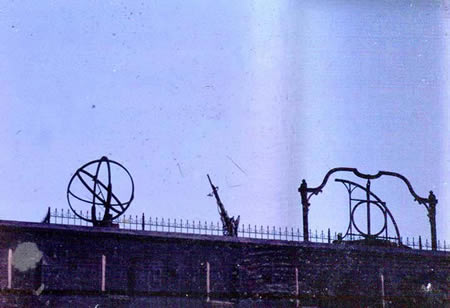
Ming Dynasty Reconstruction of Yuan Dynasty Observatory (in Beijing),
Photography by Morris Rossabi
Mongol Support for Science: the Beijing Observatory
Recognizing that the Persians had made significant advances in astronomy, particularly in their observatory at Maragheh, Khubilai Khan invited the Persian astronomer Jamal al-Din to Beijing and asked him to build an observatory there.
Jamal al-Din brought with him several astronomical instruments, and Khubilai commanded the construction of an observatory for these instruments. Cooperating with Jamal al-Din, the famed Chinese astronomer, mathematician, and hydrologist Guo Shoujing (1231-1316) devised a new, more accurate calendar.
The Mongols also built observatories in other Chinese cities, including Nanjing, where some of the instruments built by Guo Shoujing have been preserved to this day.
This photograph depicts a Ming reconstruction in Beijing of the original observatory built by Jamal al-Din. Today the observatory still houses replicas original Yuan dynasty instruments. Guo Shoujing's residence, also in Beijing, has been turned into a museum.
More on the original Yuan-Dynasty astronomical
instruments, including photographs:
Science and Civilisation in China, by Joseph Needham,
Volume 3, (Cambridge: Cambridge University Press, 1959), pages 367-378